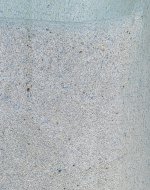- Jun 24, 2021
- 16,348
- Pool Size
- 29000
- Surface
- Vinyl
- Chlorine
- Salt Water Generator
- SWG Type
- CircuPool RJ-60 Plus
A thought for your situation. May be wonky, but could work.
Get threaded to SLP pvc joint that matches the threads on the return closest to the stairs. Mount a 90 degree elbow to it and another threaded coupler on the other side (Lets assume this coupler is female). Thread that into the return with the female threaded coupler facing toward the stairs. Make another section with a male threaded to SLP coupler to a piece of pipe long enough to reach the stairs, then cap it with a 90 degree elbow. Thread this second section onto the first section AFTER the first section is in place. You now have a pvc return section moving water on the stairs.
Get threaded to SLP pvc joint that matches the threads on the return closest to the stairs. Mount a 90 degree elbow to it and another threaded coupler on the other side (Lets assume this coupler is female). Thread that into the return with the female threaded coupler facing toward the stairs. Make another section with a male threaded to SLP coupler to a piece of pipe long enough to reach the stairs, then cap it with a 90 degree elbow. Thread this second section onto the first section AFTER the first section is in place. You now have a pvc return section moving water on the stairs.



